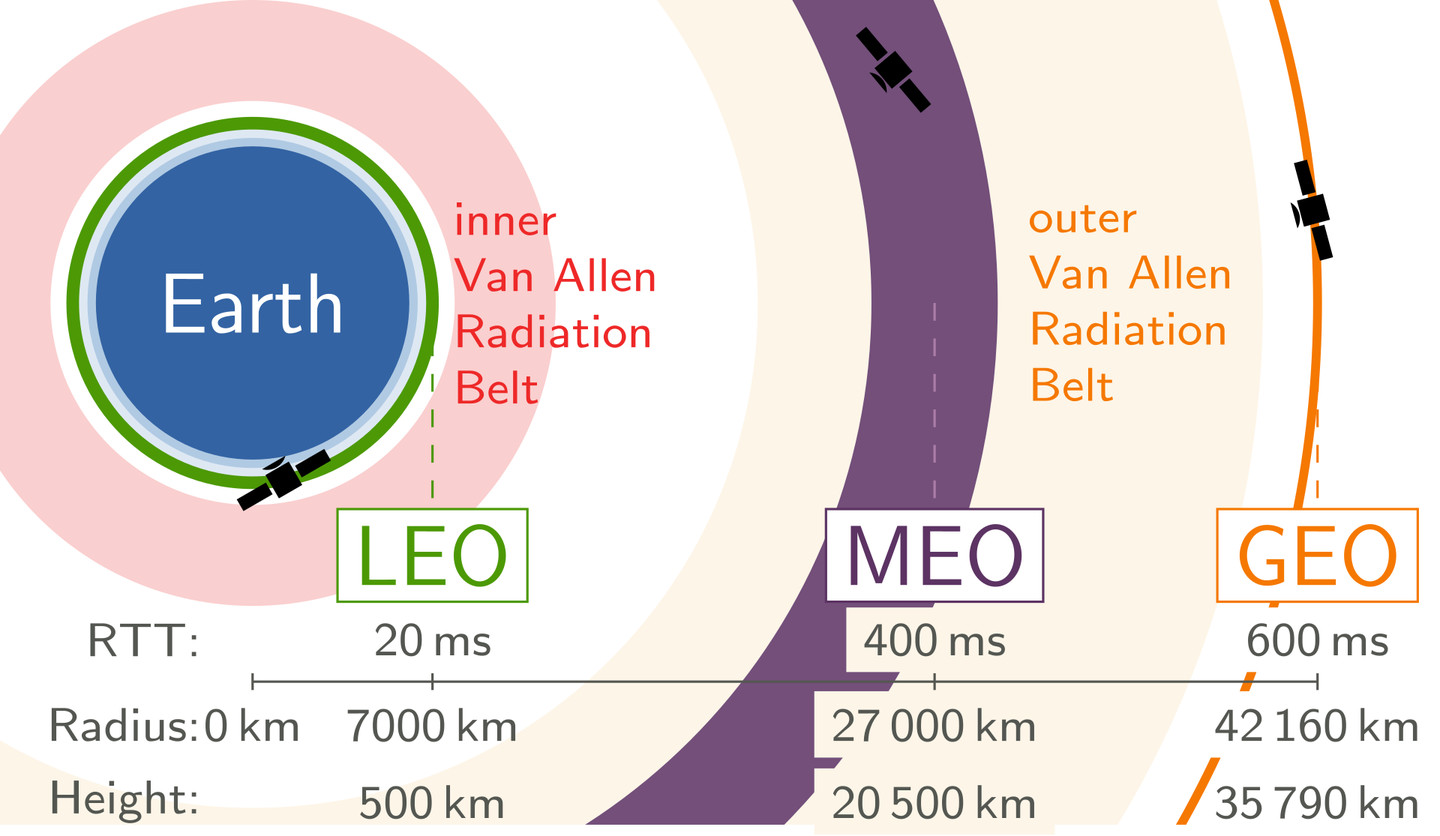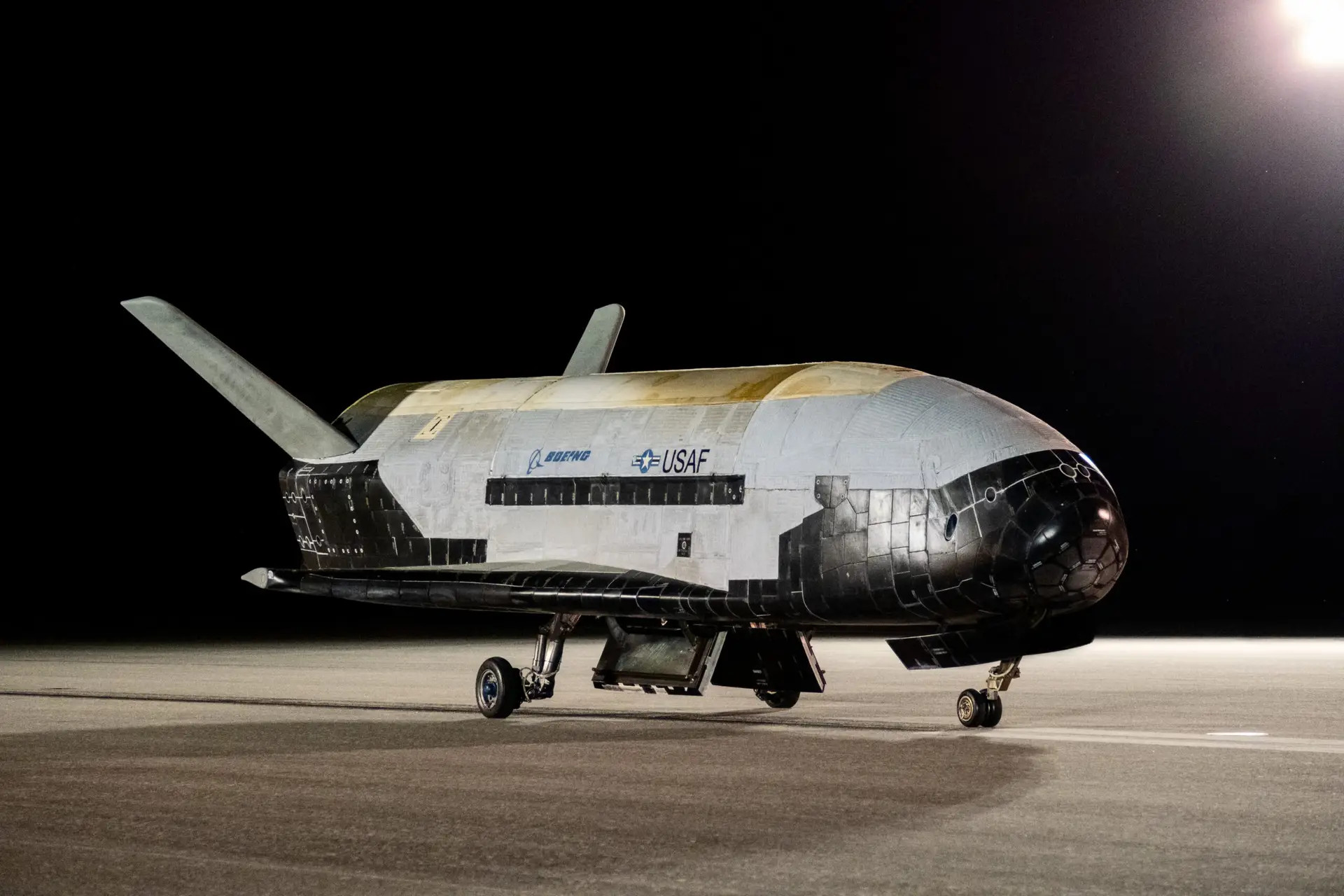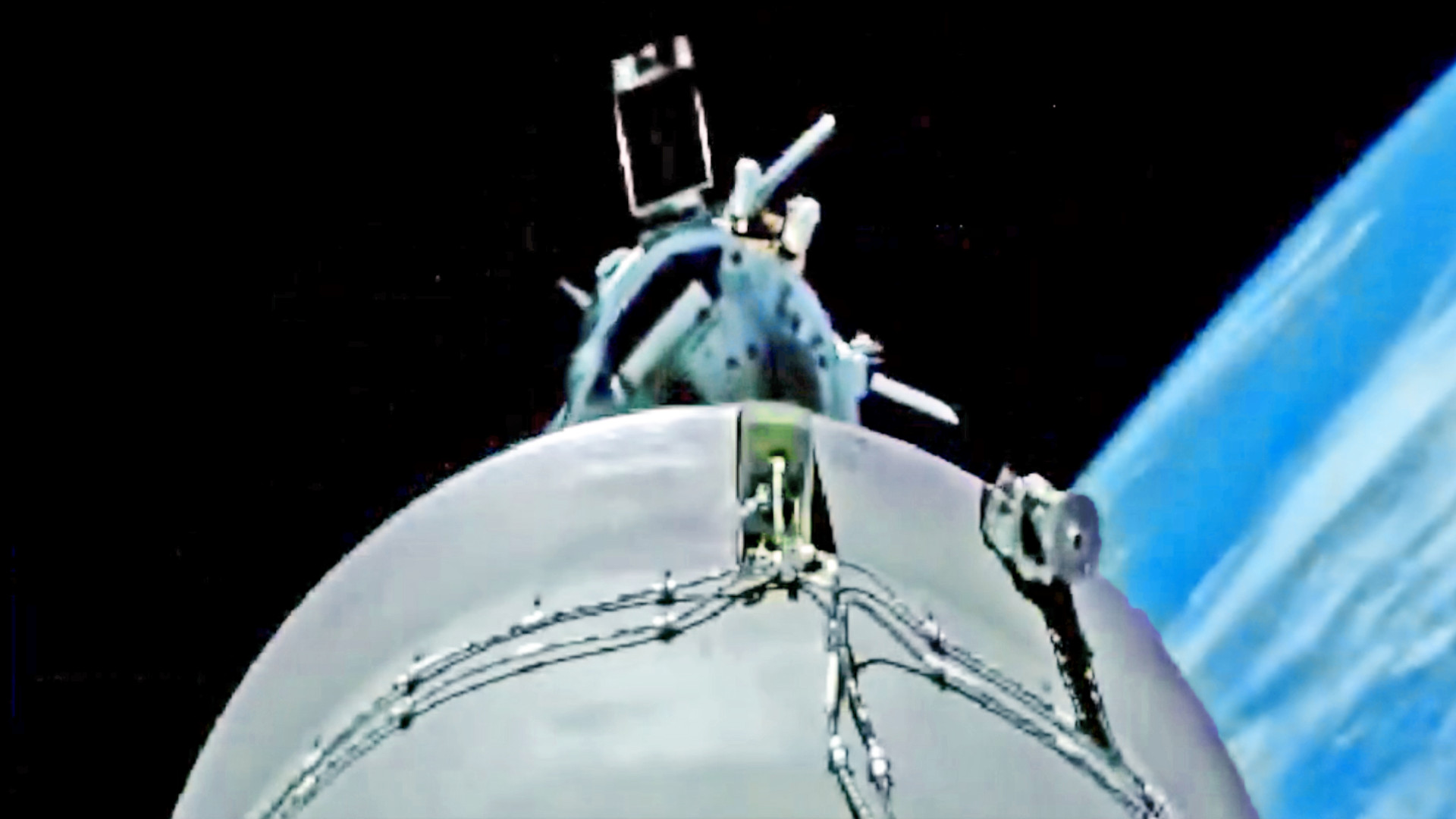Boeing and SpaceX have shared footage of U.S. Space Force’s secretive X-37B mini-shuttles in space with a payload-laden service module attached. A brief video clip showing the X-37B with the module separating from its launch rocket after being lofted into space in 2020 was included in a video montage shown ahead of the latest launch of an X-37B yesterday. You can find out more about what we can expect from the new X-37B mission in The War Zone‘s previous reporting.
SpaceX broadcast the video montage that included the clip in question just minutes before a Falcon Heavy rocket with an X-37B on top blasted off from the Kennedy Space Center in Florida last night. User @DutchSpace on X, formerly known as Twitter, was among the first to spot the clip of the X-37B separating into space.
The montage begins at approximately 3:38 in the runtime of the video seen below.
Boeing previously released the footage of the service module-equipped X-37B in space, but it was not widely disseminated. The War Zone reached out to Boeing, which designed and built the two X-37Bs, originally for the U.S. Air Force, and continues to provide contractor support for the spaceplanes, as well as SpaceX, for more information. Boeing subsequently directed us to contact the U.S. Space Force for more details.
The rendering in the social media post from Boeing below (parts of which are also in the montage that SpaceX broadcast during its live stream) also shows exactly where in the launch sequence the footage of the service module-equipped X-37B in space comes from. The spaceplane is notably depicted here without the module.
The footage of the service module-equipped X-37B in space is from the start of the record-setting Orbital Test Vehicle 6 (OTV-6) mission, which began on May 17, 2020, and ended 908 days (nearly two and a half years) later on November 12, 2022. For OTV-6, the module is known to have been used to launch the U.S. Air Force Academy’s FalconSat-8, a small cubesat, which can also be seen in the footage. You can read more about what is known about the OTV-6 mission here.
U.S. Space Force and Boeing only released the first pictures of the service module, including ones showing FalconSat-8 and other payloads loaded onto it, after the conclusion of the OTV-6 mission last year.

Boeing previously released similar footage of an X-37B without the service module separating from its launch rocket during the OTV-1 mission, which began on April 22, 2010, and ended on December 3 of that year.
Much about the X-37Bs and their missions do remain highly classified, which has led to much speculation, including about their potential use as space-based intelligence, reconnaissance, and surveillance (ISR) or weapons platforms. The War Zone has explored what is known about these spaceplanes and their capabilities in depth in the past.
The X-37B’s latest mission, known as OTV-7, is as shadowy as ever. SpaceX pointedly did not provide any footage of the second stage of the Falcon Heavy containing spaceplane after launch, which a company representative said during the live stream was “at our customer’s request.”
Last night’s launch, also known as USSF-52, was also the first time one of these spaceplanes has been put into orbit using a Falcon Heavy rocket. This would allow it to be placed in a much higher orbit than on previous missions, as The War Zone previously explored.
Space Force had already disclosed that OTV-7 will “include operating the reusable spaceplane in new orbital regimes” and there have been other indications that the mission could take the X-37B beyond the so-called geostationary orbit (GEO) belt around the Earth, as you can read more about here. The GEO belt is defined as being around 22,236 miles (35,786 kilometers) above sea level. Orbits that take spacecraft beyond the GEO belt are categorized as high earth orbits (HEO).

The U.S. government-operated website Space-Track.org has last night’s launch its database (where the X-37B being used on the OTV-7 mission has also now been logged as USA 349), but no details about its orbit are provided.

What the OTV-7 orbit might look like remains unclear and it could also change significantly over the course of the mission. The X-37B is highly maneuverable and the spaceplanes have been observed changing their positions during previous missions. Reports in the past have suggested that the X-37B may be able to rapidly redirect itself by dipping one of its wings into Earth’s atmosphere as it passes by.
Pennsylvania-headquartered private space surveillance firm COMSPOC had released a video showing a notional HEO scenario ahead of the launch. Bob Hall, COMSPOC’s Director of Operations Integration, explained to The War Zone that this model was based on publicly available information. This includes warning notices to aviators and mariners about the impending launch and a previously released requirements document that mentioned OTV-7 and a requirement “to lift a certain mass to a geosynchronous transfer orbit (GTO).”

“A GTO is essentially a HEO orbit, but with the orbit plane set up so that a satellite could easily maneuver into GEO orbit. In this case, we believe the inclination is not consistent with a GTO per se,” COMSPOC’s Hall added. “All of this combined gives us confidence that the current mission is in a HEO orbit similar to the one shown in the video.”
“For the HEO (Highly Elliptical Orbit) video we wanted to show our best guess for the possible orbit for this mission and give a sense of scale,” he continued. “In the HEO video, we see the orbit trace out as the vehicle goes around – much further from the Earth.”
COMSPOC also released a video showing a notional low Earth orbit (LEO) based on what is known about previous X-37B missions, though this seems very unlikely for OTV-7.

Other independent experts have provided additional models of what we might expect to see from the X-37B entering a HEO using similar publicly available information.
Otherwise, much about the OTV-7 remains unknown. In addition to the statement about the orbital regimes, Space Force has previously said that the mission will include “experimenting with future space domain awareness technologies, and investigating the radiation effects on materials provided by NASA.”
NASA’s Seeds-2 experiment, which will explore what happens to plant seeds exposed to “the harsh radiation environment of long-duration spaceflight, is the only payload Space Force has so far disclosed that the X-37B is carrying on OTV-7.
“As to the purpose of the orbit/mission – we do know that one goal is space domain awareness (SDA) technology,” COMPSOC’s Hall also told The War Zone, while noting that “without any further knowledge” it would be hard to say for sure what this might involve. Speaking generally, he said that one possibility could be the use of “the X-37B as a calibration test target for the recently launched Silent Barker SDA satellites in near GEO.”
“Other possible missions” might include “Remote Earth Sensing, SDA from the X-37B itself or from subsatellites it drops off, Rendezvous Proximity Operations, On Orbit Servicing, etc.,” Hall said.

U.S. military activity in and related to space is highly classified, in general. This is something American officials and members of Congress have outspoken about changing in recent years. This is all part of efforts to better communicate to the public about the importance of space to military operations (and daily life) and potential threats outside of the Earth’s atmosphere, as well as what the U.S. government is doing about those issues. The X-37Bs are themselves now tied to the Space Force’s main unit tasked with “orbital warfare.”
Space has fully emerged as a key military domain and potential battlefield in future conflicts, especially one against a near-peer adversary like China or Russia. The Chinese and Russian military have both fielded various anti-satellite weapons and are developing new capabilities. China has been dramatically expanding its overall presence in orbit.
The continued push and pull over the heavy classification of U.S. military space activities can be clearly seen in how details about the X-37Bs and their missions are handled, including just in the context of the launch last night.
The release of the first look at an X-37B with the service module in space could be a sign that more details will start to emerge about what those spaceplanes have been up to, at least in the past.
Editor’s Note: Previously released footage of an X-37B in space during the OTV-1 mission has come to our attention thanks to @DutchSpace .
Contact the author: joe@thedrive.com
